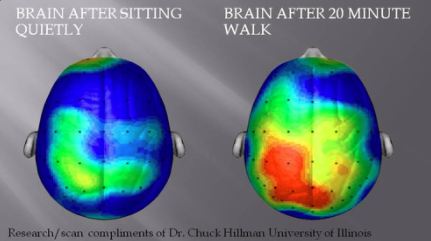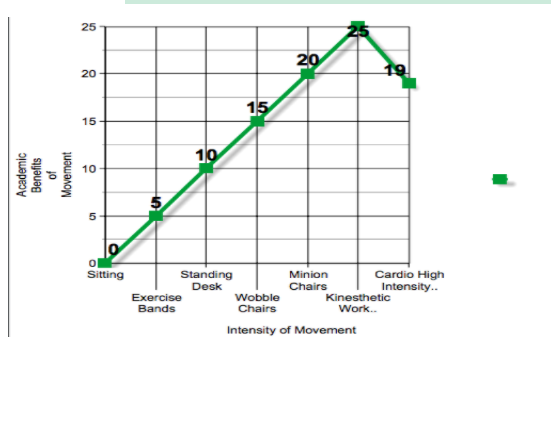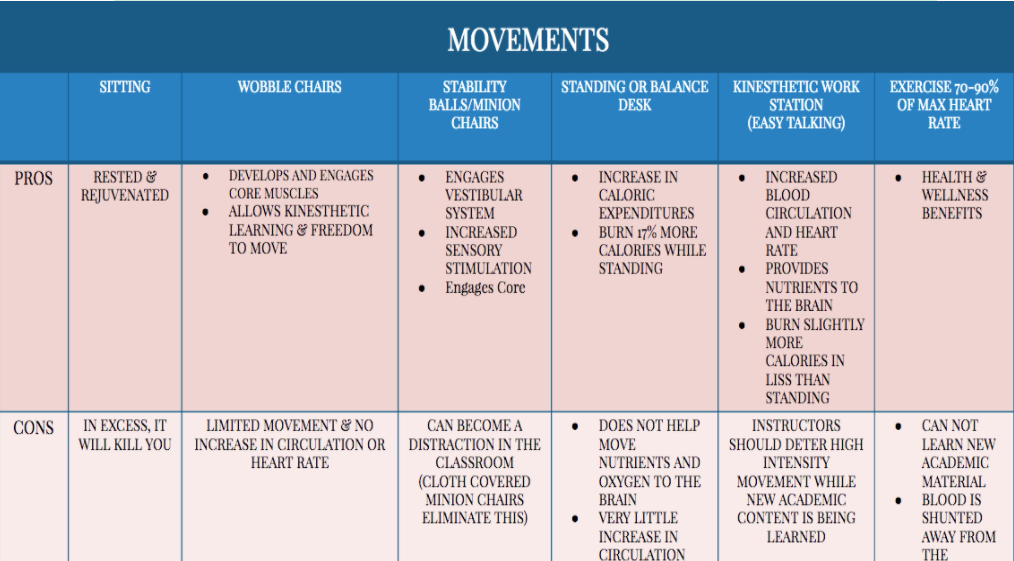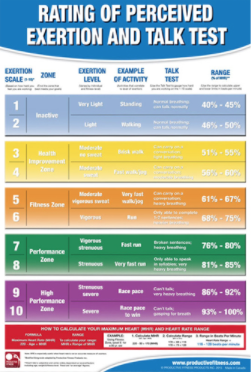Low Intensity Steady State Movements

What is LISS? It’s large muscle group movements (like leg movements during pedaling) at a low to moderate heart rate response. We are not overtaxing the body like higher intensity exercise. It is a slower, low intensity rhythmic movement. The energy expenditure and requirements of the body during LISS, are in balance to complete the body’s work task.

Which is Better for learning? LISS Movement or Exercise?Exercise or high intensity IS best used before or after learning occurs. By now you’ve probably read the hundreds of studies showing the benefits that exercise has on the brain. The key is understanding these studies were done either before or after learning occurred. The most infamous study, showed a drastic increase in science and math scores just by implementing a high intensity morning workout. (Naperville Zero Hour PE Program)
What is happening in the body during LISS? Two things to understand: 1. Glucose and Oxygen are necessary brain nutrients. 2. The brain lacks the ability to store large amount of glucose or oxygen, it requires a continuous supply. LISS Movement is actually increasing circulation which allows for these vital nutrients to continually travel to the brain. The end result is the brain reaching it’s optimal learning state. This is why movement is so important in learning!
LISS movement should be used during the learning process. You can’t learn new academic content when exercising in an aerobic zone - or at high intensity. “Scientists know that you can not learn new material while exercising at high intensity, because blood is shunted from the prefrontal cortex which hampers executive function." Dr. Ratey, Spark

How do I know when my students are in Low Intensity Steady State?Look for and encourage slower rhythmic leg movements which provide continuous slow muscle contractions. Use the talk test to measure intensity! The talk test is a simple way to measure relative intensity. In general, if you're doing moderate-intensity activity you can talk, but not sing, during the activity. If you're doing vigorous-intensity activity, you will not be able to say more than a few words without pausing for a breath.





